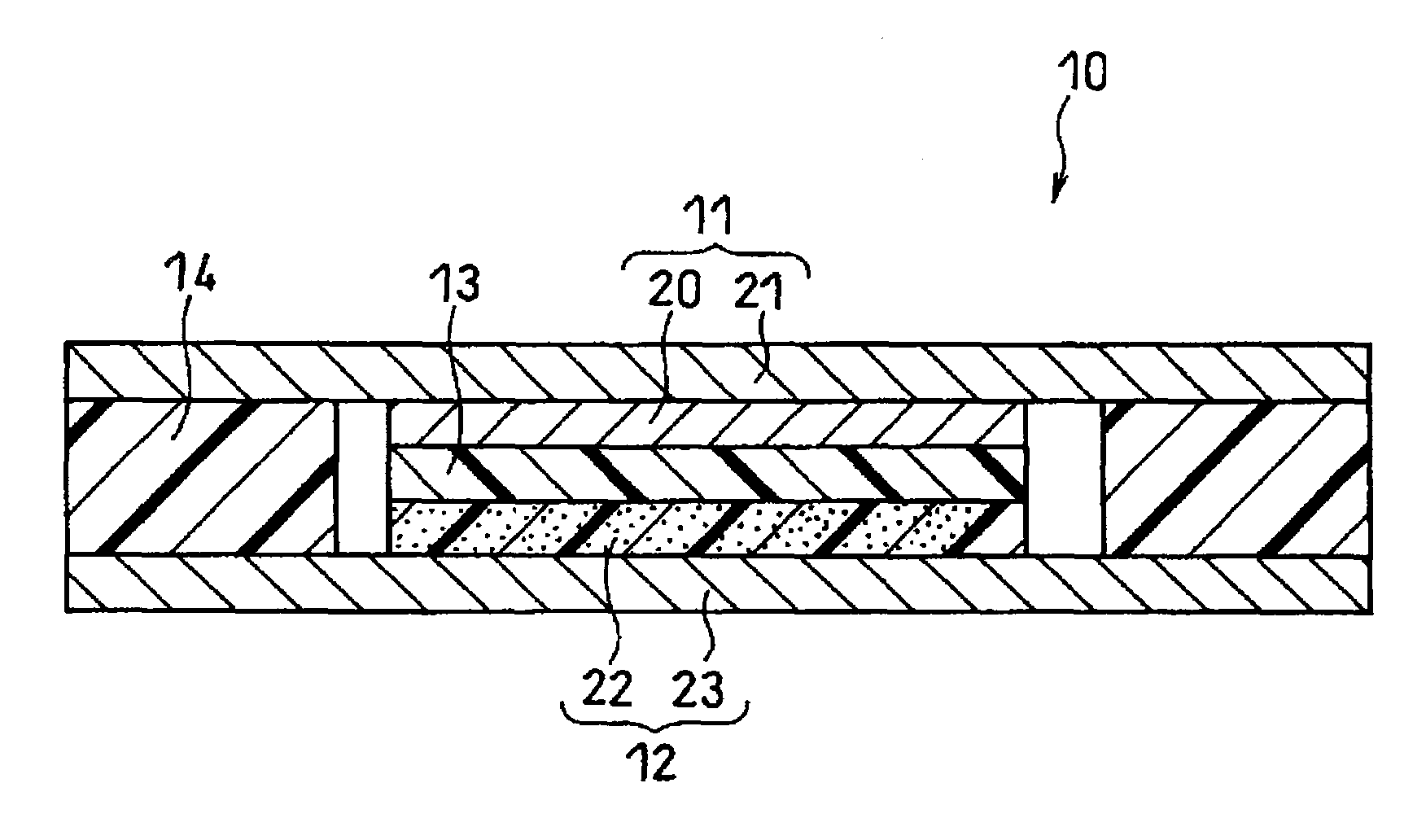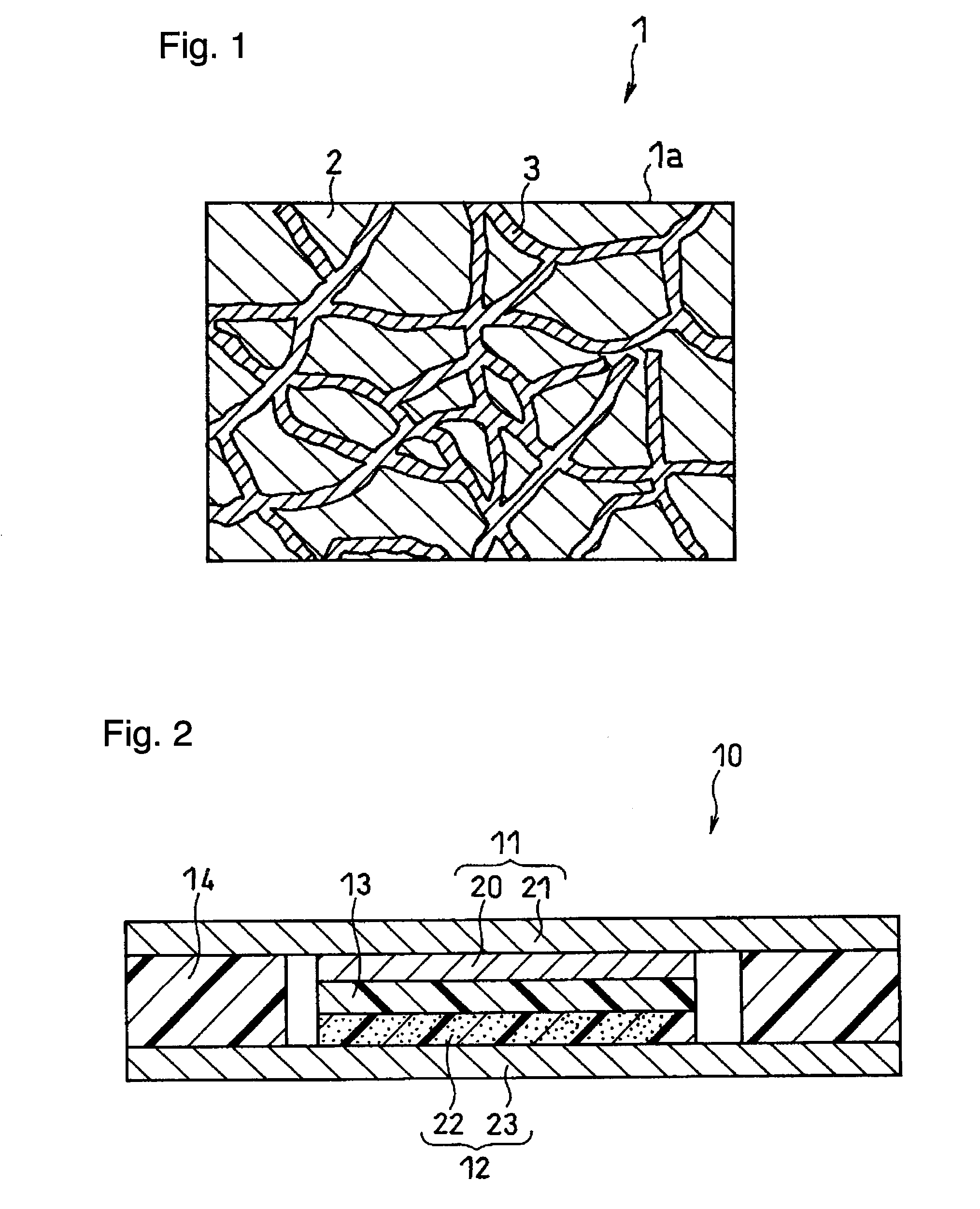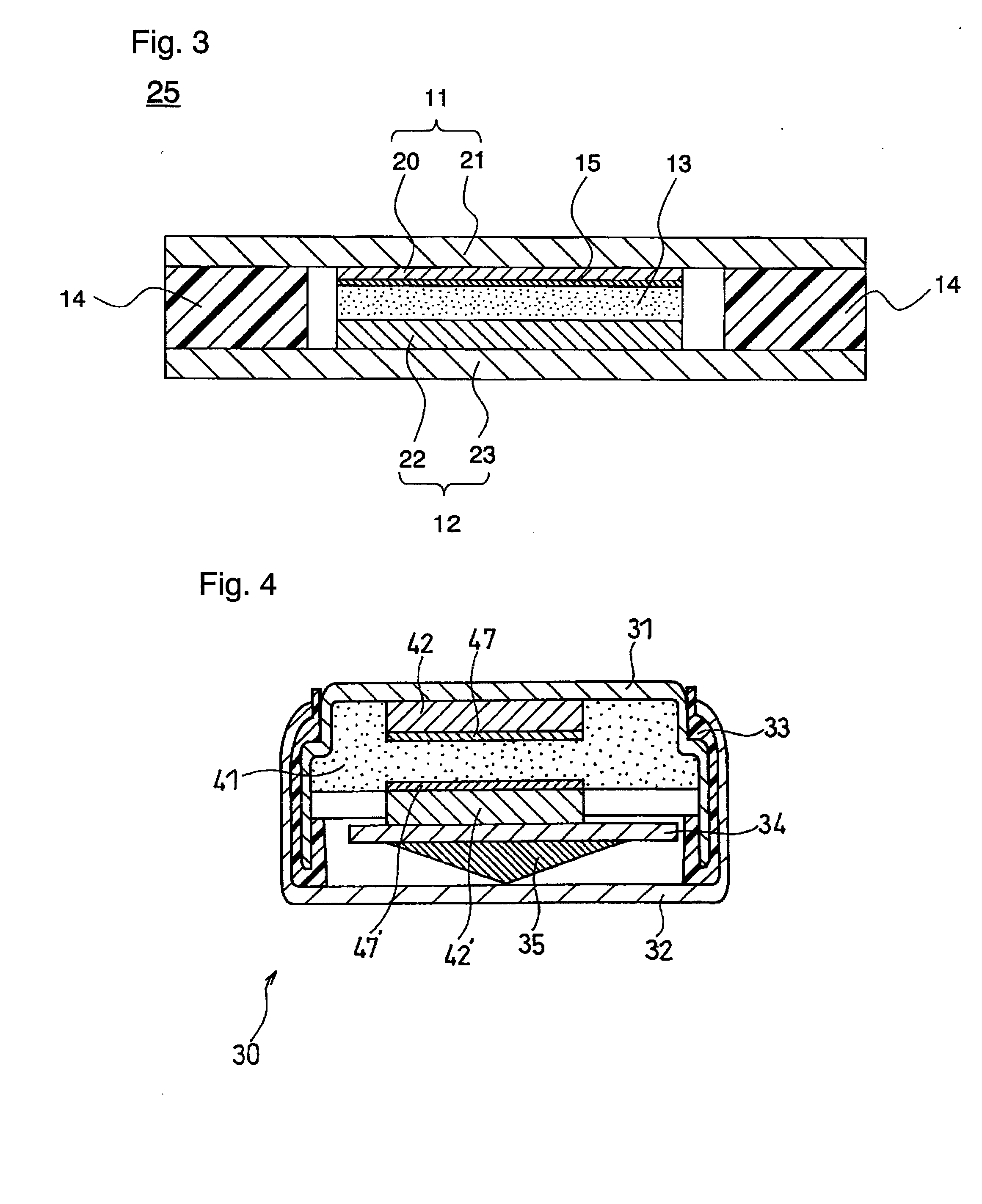All solid-state polymer battery
a polymer battery, all-in-one technology, applied in the direction of non-aqueous electrolyte cells, cell components, electrical equipment, etc., can solve the problems of high brittleness, low battery capacity of all solid-state polymer batteries including this dry polymer electrolyte, and difficult to form flexible films, etc., to achieve low resistance, increase interfacial resistance, reduce interfacial resistance
- Summary
- Abstract
- Description
- Claims
- Application Information
AI Technical Summary
Benefits of technology
Problems solved by technology
Method used
Image
Examples
example 2
Production of all Solid-State Polymer Secondary Battery
[0198]A positive electrode mixture paste was prepared in the same manner as in Example 1, except for the use of spinel-type lithium manganate (LiMn2O4) as the positive electrode active material in place of electrolytic manganese dioxide. Using the positive electrode mixture paste obtained and a 20-μm thick aluminum foil (positive electrode current collector), an electrode film including a 10-μm thick positive electrode active material layer was prepared in the same manner as in Example 1, and cut to a 10-mm diameter disc to prepare a positive electrode plate.
[0199]Flat all solid-state polymer secondary batteries were produced in the same manner as in Example 1, except for the use of the positive electrode plate thus obtained. The flat all solid-state polymer secondary batteries including the negative electrode plates prepared from the negative electrodes 1 to 14 are designated as batteries 15 to 28, respectively. Also, the flat ...
example 7
[0255]An evaluation cell (symmetric cell in which both electrodes are lithium electrodes) 30 as illustrated in FIG. 4 was produced as follows. This evaluation cell 30 is hereinafter referred to as the lithium symmetric cell 30. The production of the lithium symmetric cell 30 was carried out in a glove box whose atmosphere consisted of 3.5% by volume of nitrogen and 96.5% by volume of argon.
[0256]An acetonitrile solution of polyethylene oxide was prepared by dissolving 10 g of polyethylene oxide with a viscosity-average molecular weight of 100,000 (available from Sigma-Aldrich Corporation) and 10 g of dimethoxyethane (DME) in 100 g of acetonitrile. This acetonitrile solution was mixed with LiN(CF3SO2)2 such that the molar ratio [Li] / [EO] of the lithium ion concentration [Li] to the ether oxygen concentration [EO] in the ethylene oxide moiety in the polymer was 0.05, so as to obtain an acetonitrile solution of dry polymer electrolyte.
[0257]The acetonitrile solution of dry polymer elec...
example 8
[0266]In this example, lithium symmetric cells were produced in the same manner as in Example 7, except that the nitrogen content in the atmosphere was varied between 0.1 and 10% by volume by changing the volume ratio between nitrogen and argon.
[0267]Then, observation of lithium surface before fabrication, observation of lithium surface after aging, XRD analysis, and XPS analysis were carried out in the same manner as in Example 1. Table 8 shows the results.
TABLE 8NitrogenXPS analysiscontentLithium surfaceXDRresult (1s spectra(% byBeforeAftermeasurementof N: 390.0 tovolume)fabricationagingresult396.0 eV)0.1Metallic lusterBrownOnly Li peaksMaximum peak0.5Metallic lusterBrownOnly Li peakspresent only1.0Metallic lusterBrownOnly Li peaksfrom 393.5 to3.5Metallic lusterBrownOnly Li peaks394.5 eV10Metallic lusterBrownOnly Li peaks
[0268]As shown in Table 1, the same results as those of Example 7 were obtained, and the negative electrode interface after aging was found to have the amorphous ...
PUM
| Property | Measurement | Unit |
|---|---|---|
| grain size | aaaaa | aaaaa |
| molar ratio | aaaaa | aaaaa |
| molar ratio | aaaaa | aaaaa |
Abstract
Description
Claims
Application Information
 Login to View More
Login to View More - R&D
- Intellectual Property
- Life Sciences
- Materials
- Tech Scout
- Unparalleled Data Quality
- Higher Quality Content
- 60% Fewer Hallucinations
Browse by: Latest US Patents, China's latest patents, Technical Efficacy Thesaurus, Application Domain, Technology Topic, Popular Technical Reports.
© 2025 PatSnap. All rights reserved.Legal|Privacy policy|Modern Slavery Act Transparency Statement|Sitemap|About US| Contact US: help@patsnap.com



